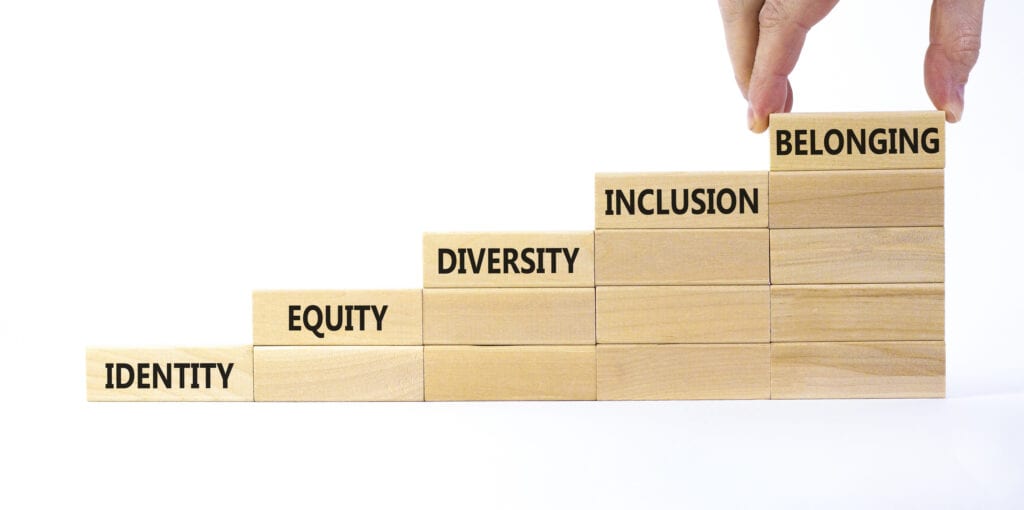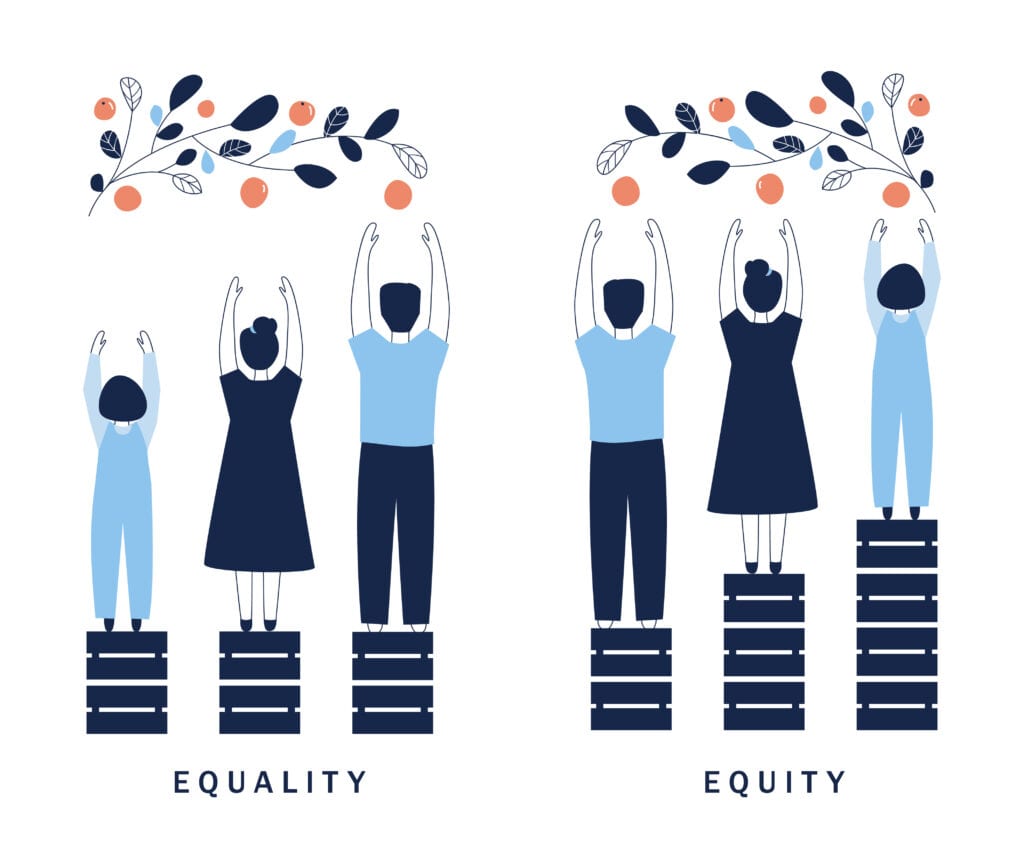Reimagining and Designing Equitable Classrooms that Work for All Learners
 We’re at a pivotal moment of change in education where we can recalibrate and reimagine what education can mean for Black, Brown, and White students. Now more than ever, we are aware that the way we were doing education was missing the mark for many students, especially for students on the margins. (I would argue it was missing the mark for White students as well.) Education B.C. (Before Covid) suggested to Black and Brown students that their stories did not matter and that they were not an integral part of the making of America. It suggested to white students that almost everything (if not everything) was imagined and created only by people that resembled their pigmentation and that there was nothing to be gained from learning anything different. Fortunately, we are now in a position to use our imagination to shape who we want to be(come) as practitioners, examine what learning means to our students (not to us), and how we can create real equity in education. This shift will allow Black and Brown students to feel included and expose white students to learning experiences that are reflective of the culturally and linguistically diverse world that we live in.
We’re at a pivotal moment of change in education where we can recalibrate and reimagine what education can mean for Black, Brown, and White students. Now more than ever, we are aware that the way we were doing education was missing the mark for many students, especially for students on the margins. (I would argue it was missing the mark for White students as well.) Education B.C. (Before Covid) suggested to Black and Brown students that their stories did not matter and that they were not an integral part of the making of America. It suggested to white students that almost everything (if not everything) was imagined and created only by people that resembled their pigmentation and that there was nothing to be gained from learning anything different. Fortunately, we are now in a position to use our imagination to shape who we want to be(come) as practitioners, examine what learning means to our students (not to us), and how we can create real equity in education. This shift will allow Black and Brown students to feel included and expose white students to learning experiences that are reflective of the culturally and linguistically diverse world that we live in.
Webster’s Dictionary defines imagination as “to form a mental image of something not present.” Imagining educational experiences for our students that may not be present yet can take on a variety of forms. When we think about the agency generated by our students as they learned from home using multiple devices and applications, how can we continue to embrace this digital learning using virtual educational tools to motivate and encourage an interactive and supportive learning environment? We have an opportunity, and some would say an obligation, to challenge our traditional pedagogical practices and make them responsive, relationship-focused, and personalized. Yes, this means that cell phones, TikTok, and Instagram may become part of our standard classroom materials.
 So what becomes possible if we don't focus on students taking a test, but instead expect students to be co-producers of knowledge in the classroom? Dr. Ladson-Billings asserts that “students learn a lot more than we can test.” Imagine students becoming excited to know that their ability to think is intentionally being nurtured by asking them thought-provoking questions that consider the students’ context (e.g. community, experiences, family, etc.), igniting a wondering and curiosity within students to want to explore more. We are in a perfect position to cultivate educational environments where students can fall in love with learning in and outside of the classroom. These environments must provide evidence to Black and Brown students that they belong and will be cared for. What might that evidence look like? What evidence would you want to see if you were a student of color?
So what becomes possible if we don't focus on students taking a test, but instead expect students to be co-producers of knowledge in the classroom? Dr. Ladson-Billings asserts that “students learn a lot more than we can test.” Imagine students becoming excited to know that their ability to think is intentionally being nurtured by asking them thought-provoking questions that consider the students’ context (e.g. community, experiences, family, etc.), igniting a wondering and curiosity within students to want to explore more. We are in a perfect position to cultivate educational environments where students can fall in love with learning in and outside of the classroom. These environments must provide evidence to Black and Brown students that they belong and will be cared for. What might that evidence look like? What evidence would you want to see if you were a student of color?
What can we do now to facilitate learning that encourages students to understand their own culture and acquire new skills in at least one other culture? These cross-cultural skills support our students with the ability to communicate with respect, recognize and appreciate others’ values while celebrating their own values. Not dismissing their native language or dialect but, instead, how we can include it as an option when learning. For example, language-based code-switching is about finding effective ways to communicate with another person in a language or style that puts that person at ease (Tatum). Imagine if we validated students who code-switched naturally (it is a skill) and we afforded them the opportunity to apply it in their learning. What if students were given the option to infuse it into their writing? For example, could we give students the option to use “their” language for less formal writing such as journaling? Imagine validating students' ability to code-switch and honing their ability to know when to apply that skill, making them more effective communicators when writing or speaking, effectively becoming Bilingual.
 Finally, what is the “why” for our students? If last year taught us nothing else, it taught us that we are all looking for a purpose. Our students are no different. They are now questioning “why” they have to go back to school when they can learn from home and “why” they need to do their homework. Learning must be purposeful, meaningful, and relevant if we want students to be thoughtfully involved. We must know how the learning connects to and is reflective of the world that our students live in, including their communities, their families, and their future. Students want to produce work that reveals the fabric of their community and solve problems that are important to them right now.
Finally, what is the “why” for our students? If last year taught us nothing else, it taught us that we are all looking for a purpose. Our students are no different. They are now questioning “why” they have to go back to school when they can learn from home and “why” they need to do their homework. Learning must be purposeful, meaningful, and relevant if we want students to be thoughtfully involved. We must know how the learning connects to and is reflective of the world that our students live in, including their communities, their families, and their future. Students want to produce work that reveals the fabric of their community and solve problems that are important to them right now.
Let’s use this upcoming school year to be courageous and activate our creativity to expand our pedagogical approaches and subject area expertise beyond the narrow constraints of testing. Let's co-design and co-produce the “why” of learning with students to create reimagined learning opportunities and classrooms that cultivate a culture of belonging for all students.
Spend a few minutes and allow your imagination to run wild with creativity for a new day in education. I would love to hear your thoughts and ideas of what you are imagining for the new school year. Connect with me on Twitter @CCThaddies or via email at cassondrathaddies@linclearning.com. Let’s spark some ideas for the world!